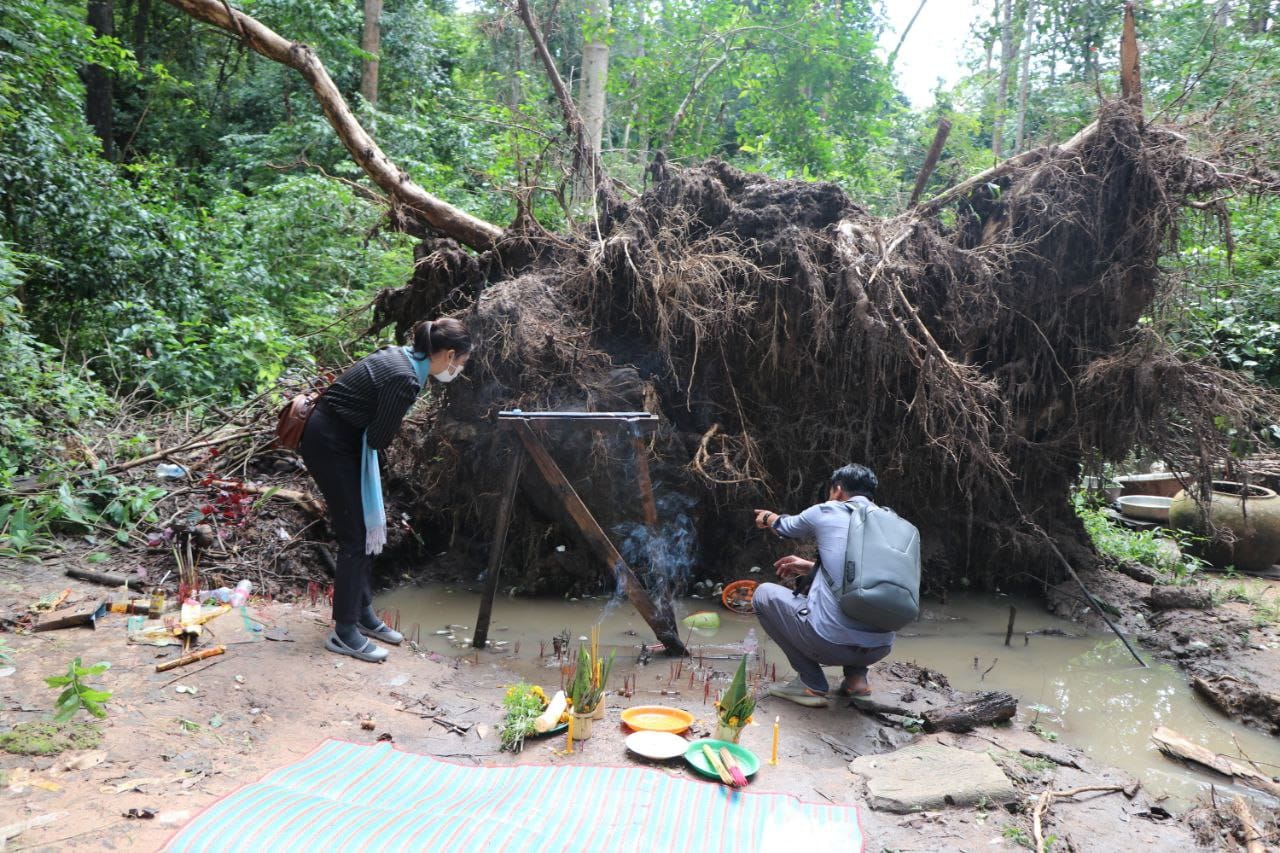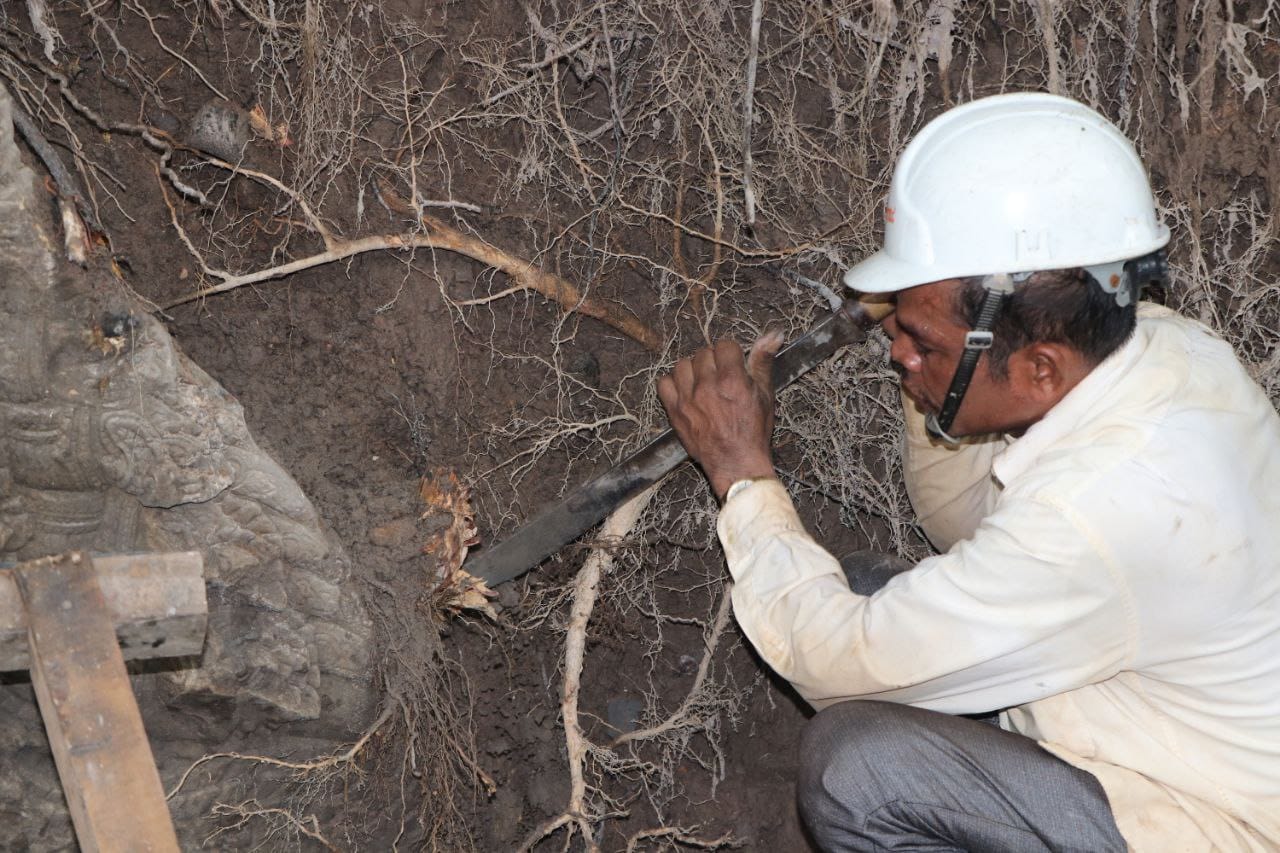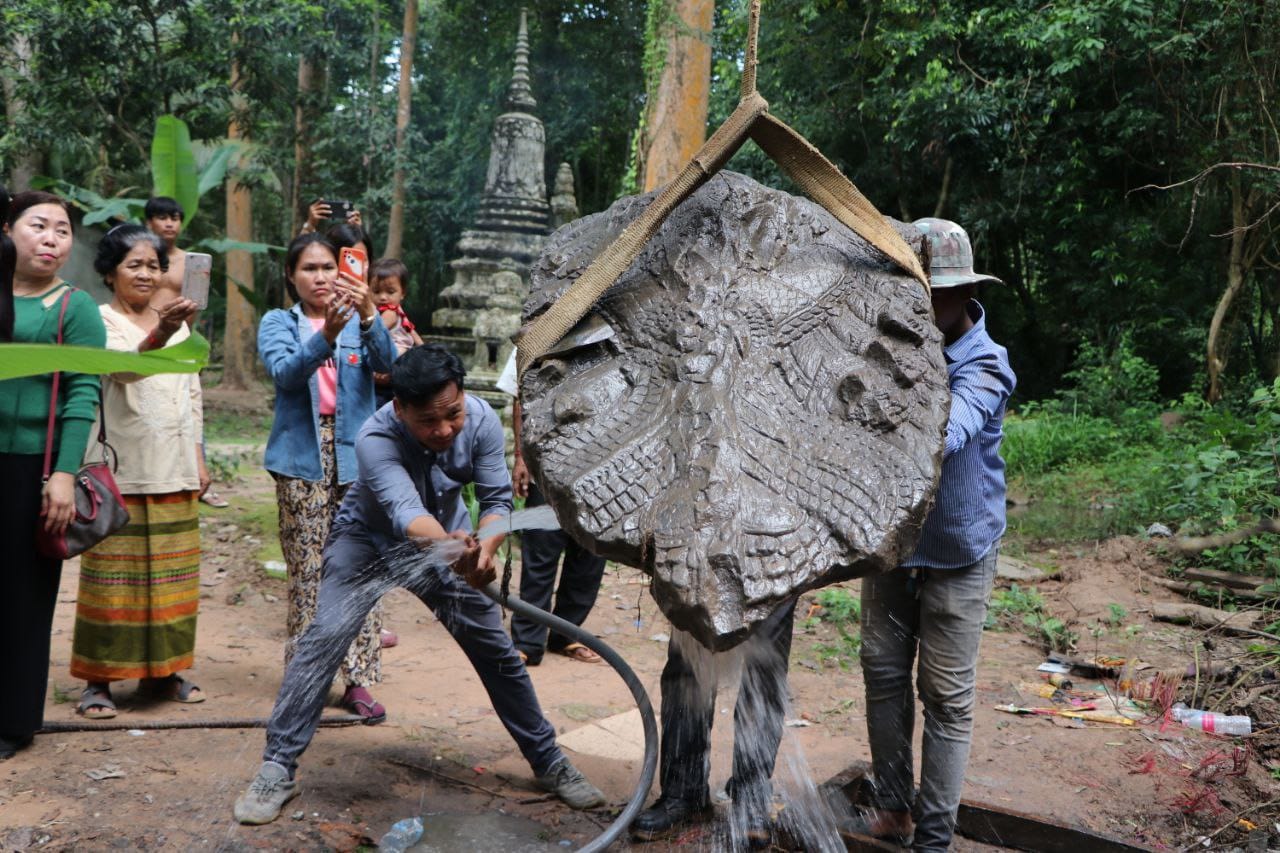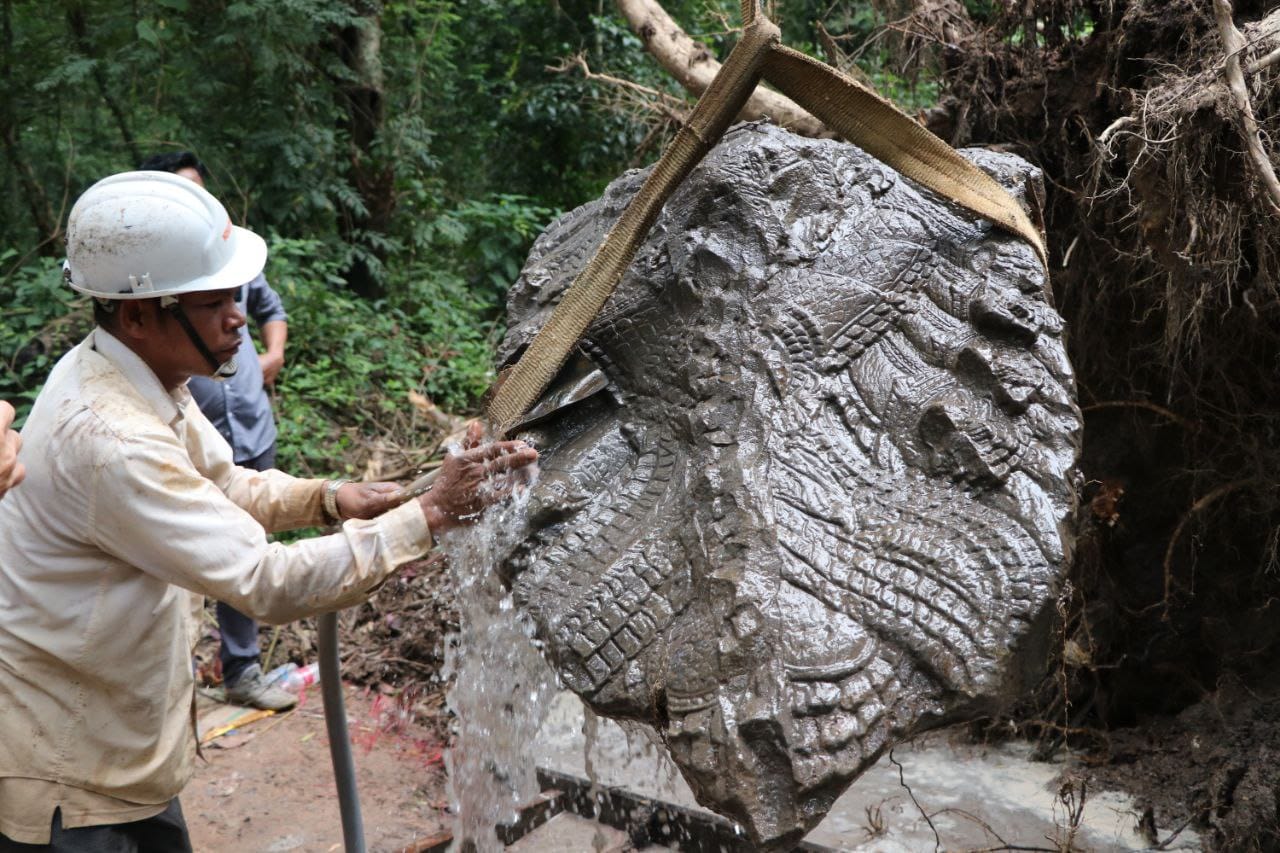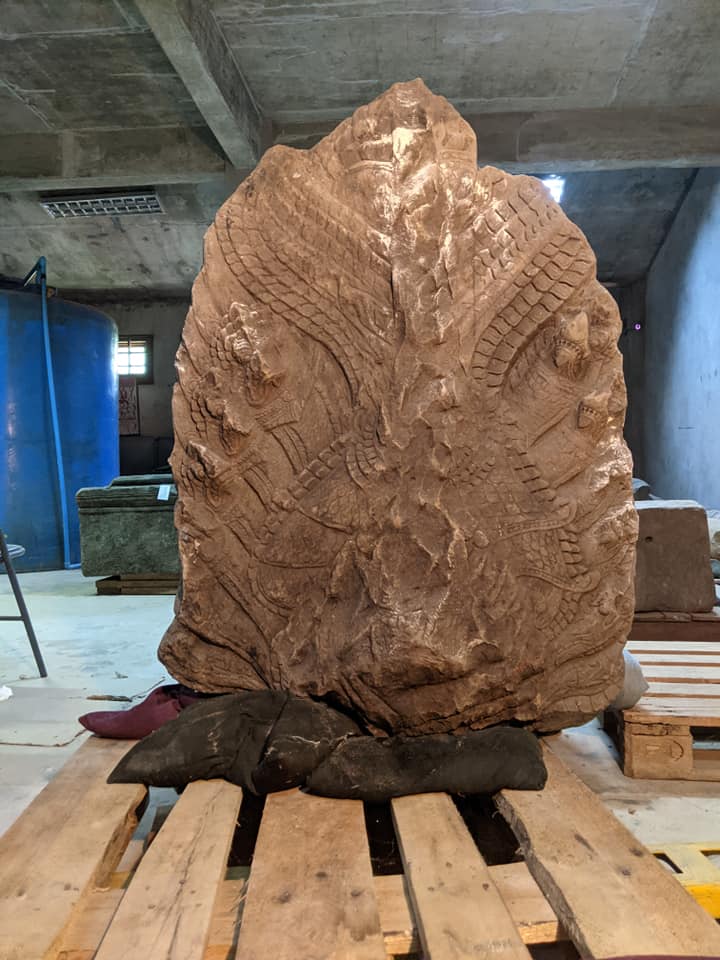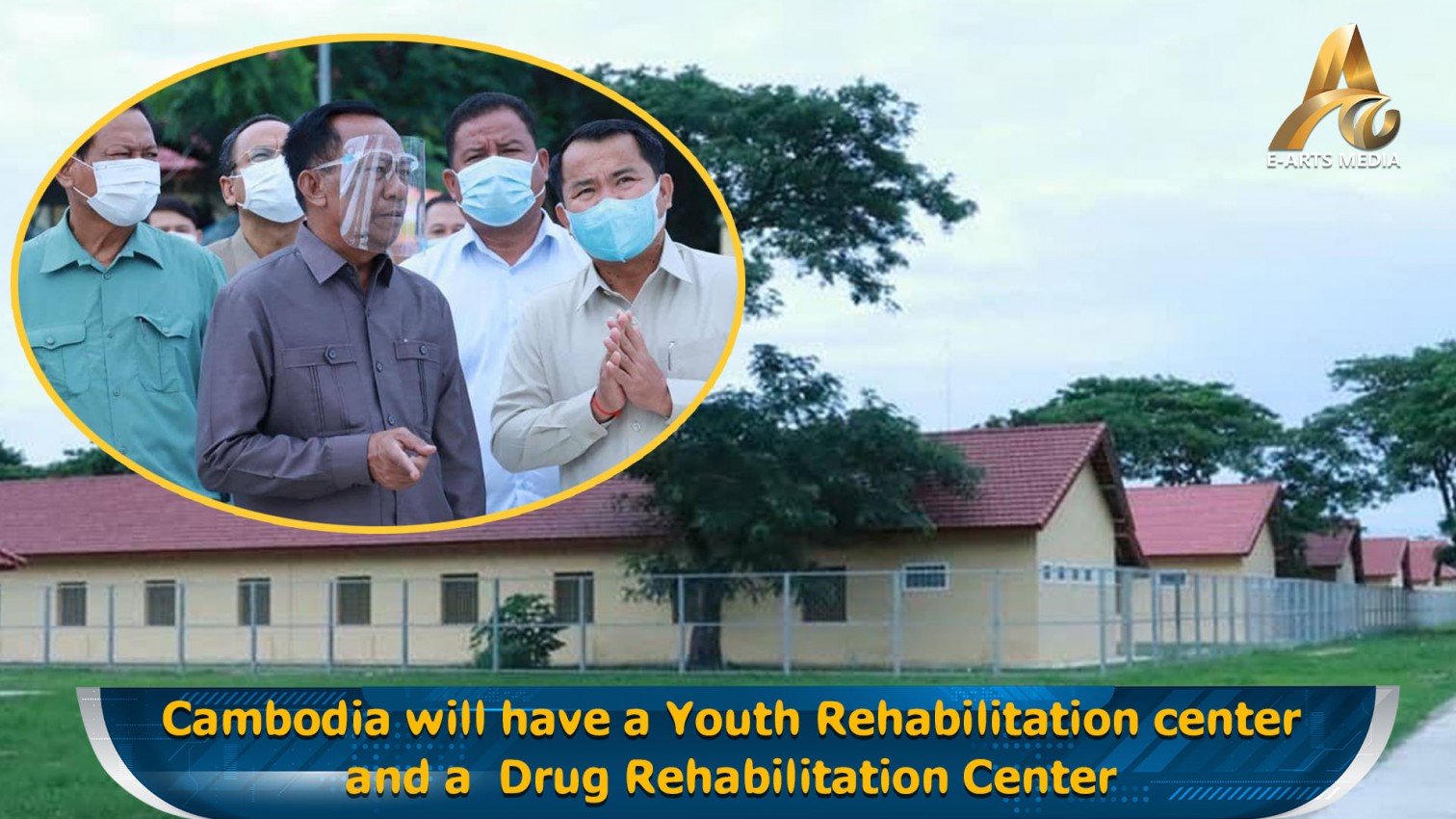Siem Reap: A sandstone sculpture of a dragon's head in the Bayon style was found buried in the ground, emerging from the roots of a tree after the tree in the former capital of Angkor Thom collapsed.
The Apsara Authority on October 5, 2022, said that recently, a dragon head made of sandstone in the Bayon style was accidentally found after a large pine tree fell, and fragments of dragon heads that was buried in the ground for many years to emerge from the roots of trees in the area of Wat Tep Pranom, the former capital of Angkor Thom.
According to Chhouk Somala, head of the art registration team at the Department of Preservation of Temples and Archeology of the APSARA Authority, the head of the dragon was buried half a meter deep. He said that in fact, that the tree that grew does not have large g roots, but due to the heavy rain, the soil eroded, causing the tree to fall and the head of the dragon to appear.
Mr. Chhouk Somala added that the fragments of the dragon's head are only fragments from neck to the head, which is only 1.2 meters long and 1 meter wide. He said that it was a gourd riding on the dragon's head, with the front of the dragon's face almost completely damaged. The gourd, on the other hand, was missing nose and miss parts from its upper arms, as well as parts of the head.
However, the director of the Department of Preservation and Archeology of the APSARA Authority concluded that the dragons head fragments could have been be moved from the Bayon temple, but he could not confirm the location, time, and purpose it was move there.
At the same time, he added that most of these statues were in the Bayon style during the reign of Jayavarman VII, in which he combined dragons and gourd, who were enemies, into one art form.
He stated that he might have wanted to express the concept of religious unification between Hinduism and Buddhism, so he ordered the artists to combine dragons and gourds and display them in his buildings.
It should be noted that to secure the dragons head fragment, APSARA Authority cooperated with the Heritage Protection Police and the travel agency’s to make a record of handing over the sculpture to be kept at the Norodom Sihanouk-Angkor Museum for registration as a document and to clean and keep it according to the technique and find other data related to this piece of dragon head to easily put it back to its original sculpture.
